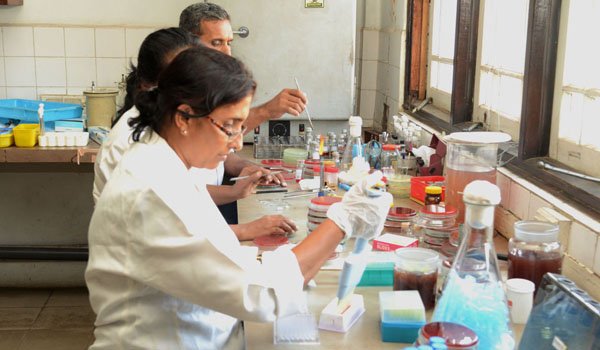A bacteria called Burkholderia pseudomallei — generally found in Southeast Asia and northern Australia — causes an infection that is difficult to treat and can be fatal, according to Mohan Natesan, a scientific investigator at the U.S. Army Medical Research Institute of Infectious Diseases at Fort Detrick.
To help bridge the gaps in scientific knowledge about the bacteria and the disease it causes, the Army institute is collaborating with Genetech, a lab in Sri Lanka.
The Fort Detrick lab started working with Sri Lankan investigators in 2014, according to Natesan. The Army intends to contract with Genetech for 18 months, according to a federal notice published Sept. 23.
The bacterial infection that results from Burkholderia pseudomallei is called melioidosis and can affect humans and animals. The disease’s effects range from a chronic, localized infection to an acute, fatal bloodstream infection.
The infection spreads by contaminated soil and water. In tropical areas where the bacteria is more common, the number of infected patients increases during the rainy season.
According to a 2012 paper published in a Sri Lankan journal, it’s “highly likely” that many cases go uncounted, partially because the disease affects mainly rural communities, can be rapidly fatal and is not widely known among clinical staff.
“Melioidosis is an under-reported and poorly understood disease,” Natesan wrote in an email.
Genetech’s role will be to collect samples from patients, document cases of melioidosis and analyze patients’ immune response to the infection. The clinical sites the lab maintains are in locations where people are more likely to get the disease.
The data that’s collected will help the Army institute understand the infection and develop diagnostic tools, therapeutic products, and vaccines against melioidosis, Natesan wrote in an email.
The lab’s partnership with Fort Detrick researchers helped establish a small surveillance program for melioidosis in Sri Lanka.
The team found more than 65 cases in 2015, many of which would have been fatal if they had gone unidentified, according to Caree Vander Linden, a spokeswoman for the institute.
Since the disease is found in soil where U.S. service members may be deployed, the Army has an interest in developing treatment and vaccine options to protect against it.
The bacteria is “naturally resistant” to many common antibiotics, Vander Linden said.
Symptoms of melioidosis range from fever, headache, muscle or joint pain to seizures, anorexia and disorientation. According to the Centers for Disease Control and Prevention, symptoms generally appear two to four weeks after exposure to the bacteria.
(By Sylvia Carignan - fredericknewspost.com)






